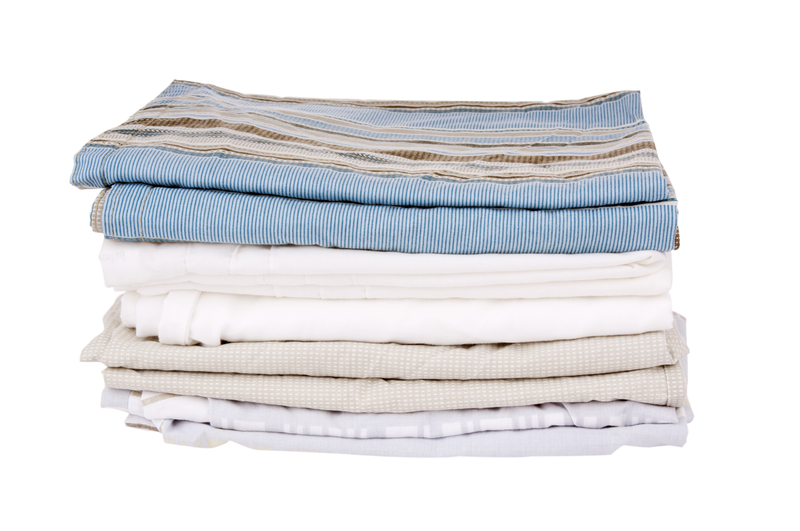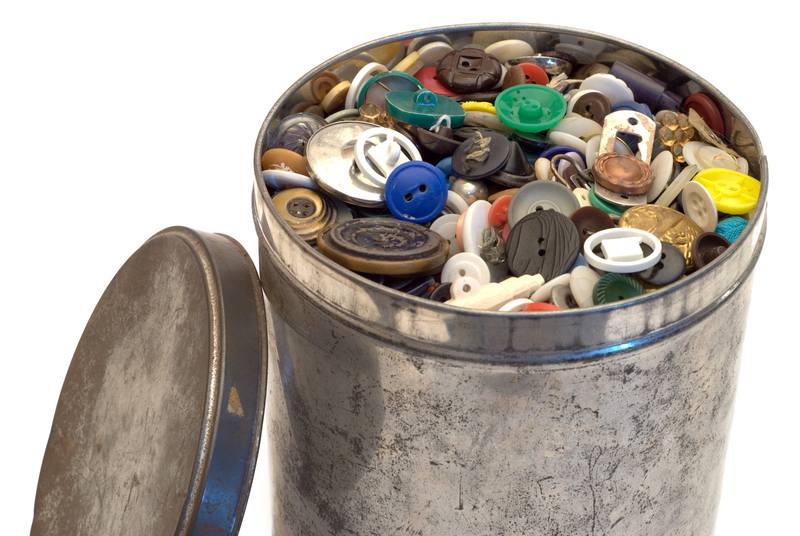Step-by-Step Methods for Responsible PPE Waste Removal
In today's health and safety-conscious world, personal protective equipment (PPE) has become a household staple. From masks and gloves to face shields and gowns, PPE plays a crucial role in safeguarding individuals and communities. However, as their use becomes ubiquitous, managing the resulting PPE waste responsibly is more important than ever. This comprehensive guide outlines step-by-step methods for responsible PPE waste removal to help businesses, institutions, and individuals minimize environmental impact and ensure sensitive waste does not become a hazard.

Why Responsible PPE Waste Removal Is Essential
Improperly discarded PPE can cause severe harm. It can pollute waterways, introduce microplastics into ecosystems, and transmit infectious agents if contaminated. As a result, safe and responsible disposal of PPE waste protects not only the environment but also public health.
- PPE waste includes masks, gloves, face shields, gowns, and shoe covers.
- Improper disposal can lead to contamination, disease spread, and pollution.
- Regulatory bodies have established guidelines for PPE and hazardous waste removal.
- PPE waste removal is essential for workplaces, healthcare facilities, and the public.
Step 1: Understanding PPE Waste Categories
Before you can begin the process, it is vital to identify and classify the different kinds of PPE waste. PPE waste removal processes can vary based on whether the materials are infectious, non-infectious, recyclable, or hazardous.
Types of PPE Waste
- General PPE Waste: Used but non-contaminated items from non-medical use.
Examples: Office masks, public transport gloves. - Infectious PPE Waste: Used in healthcare settings or by individuals who are sick/quarantined.
- Hazardous PPE Waste: Items contaminated with chemicals or biohazards.
- Recyclable PPE Waste: Items made from recyclable materials, if accepted locally.
Step 2: Collecting PPE Waste Safely
Ascertain that all PPE waste is collected securely and separately from regular garbage. This is particularly important for waste potentially contaminated with infectious agents.
Key Practices for Safe Collection:
- Use clearly marked bins: Allocate separate bins labeled PPE Waste Only.
- Touch-minimized disposal: Opt for pedal-operated or touchless bins to reduce cross-contamination.
- Always wear gloves: When handling used PPE, wear disposable gloves.
- Tightly seal collection bags: Use durable, leak-proof bags.
- Educate users: Post prominent signage with disposal guidance at collection points.
Step 3: Storage and Internal Transport of PPE Waste
Proper storage and internal transport prevent the spread of potential contaminants and maintain hygiene. Compliant PPE waste removal involves staging waste for pick-up or movement within a facility safely.
- Store bags in designated, ventilated areas away from common traffic.
- Segregate types: Store medical and non-medical PPE waste separately.
- Always keep waste containers upright and covered when moving.
- Label holding areas: Use clear signs.
- Maintain regular pick-up schedules to avoid overflows.
Step 4: PPE Waste Removal from Premises
Secure removal is critical to prevent exposure and environmental damage. Businesses and healthcare facilities should partner with licensed waste management companies specializing in PPE waste disposal.
- Arrange periodic collections based on waste volumes.
- Verify credentials: Work only with providers certified for hazardous and infectious waste.
- Provide access: Ensure easy access to waste pick-up points for collectors.
- Keep transfer records for regulatory compliance.
Special Notes for Domestic Removal:
If disposing of PPE waste from home (non-infectious), seal it in a separate bag, then place it with general waste as per your local council guidelines. If COVID-19 symptoms or infection is present, follow strict local public health instructions for infectious waste disposal.
Step 5: Treatment and Final Disposal of PPE Waste
Once collected, PPE waste removal continues with treatment to neutralize potential biological or chemical hazards before final disposal.
Common Treatment Methods:
- Incineration: The most effective for infectious or hazardous PPE waste; destroys pathogens at high temperatures.
- Autoclaving: Uses steam sterilization (common in hospitals) for some PPE types before safe landfill disposal.
- Chemical Disinfection: For specific hazardous PPE waste, prior to landfill disposal.
- Landfill Disposal: Only non-infectious and non-hazardous PPE waste should be landfilled, and preferably in lined sites.
- Energy Recovery: Some incineration facilities convert PPE waste to energy, reducing landfill burden.
Step 6: PPE Waste Recycling Initiatives
While many PPE products are designed for single-use, new recycling programs and innovations are emerging to tackle mounting waste. If recyclable PPE is available or if your supplier or local government offers return schemes, participate actively to support a circular economy.
- Check PPE packaging for recycling codes and guidance.
- Use separate bins for recyclable PPE items.
- Partner with organizations such as TerraCycle or government pilot programmes where available.
- Educate staff on what can and cannot be recycled.
PPE Upcycling - Innovative Approaches
Some organizations now upcycle PPE waste into building materials, road surfaces, and other products. Supporting or implementing such schemes can reduce landfill usage.
Step 7: Training and Awareness for Effective PPE Waste Removal
The human factor is critical in ensuring responsible PPE waste removal. Proper training and awareness ensure every stakeholder follows best practices.
- Conduct regular employee training on correct PPE waste segregation and handling.
- Use visual aids, posters, and digital reminders.
- Assign a PPE waste coordinator or champion for oversight.
- Hold periodic reviews and update protocols as guidance evolves.
- Reward and recognize responsible behavior to reinforce good habits.
Step 8: Compliance with Regulations
Adhering to local and national laws is crucial in responsible PPE waste removal.
- Stay up to date: Regulations can change as public health emergencies evolve.
- Maintain documentation: Keep records of waste quantities and disposal certificates.
- Follow OSHA (USA), HSE (UK), or other relevant authority's PPE waste guidelines if applicable.
- Meet mandatory recycling or reporting targets where required.
Step 9: Reducing PPE Waste at the Source
Responsible PPE waste management also means minimizing what goes to waste in the first place.
- Purchase only necessary quantities of PPE.
- Choose reusable PPE (such as washable masks and gowns) where feasible and safe.
- Opt for PPE made from sustainable or recyclable materials.
- Work with suppliers who offer Take-Back or Closed-Loop recycling programs.
Environmental and Social Benefits of Responsible PPE Waste Removal
Implementing step-by-step methods for responsible PPE waste removal yields wide-ranging benefits:
- Prevents pollution: Stops plastics and chemicals entering rivers and soil.
- Protects public health: Prevents pathogen transmission and accidental contact with hazardous waste.
- Conserves resources: Recirculates materials via recycling and energy-from-waste processes.
- Boosts compliance: Avoids legal penalties and supports sustainability reporting.
- Enhances reputation: Demonstrates corporate social responsibility and environmental stewardship.
Common Challenges in Responsible PPE Waste Removal
- Limited local recycling options for PPE types.
- Confusion over which PPE items are recyclable or hazardous.
- Ensuring compliance in decentralized or public settings.
- Managing increased volumes during pandemics.
Organizations need to stay proactive, seek guidance from waste management experts, and upgrade protocols as circumstances change.
Frequently Asked Questions (FAQ) About PPE Waste Removal
- Can all PPE be recycled?
No. Most single-use hospital PPE is not widely recycled due to contamination risk. Check with local recycling schemes for eligible items. - How should businesses store PPE waste before collection?
Store in well-marked, secure, ventilated locations away from routine human contact until pickup. - Is special training needed for PPE waste removal?
Yes. All staff should be regularly trained in PPE handling, segregation, and emergency response. - What happens if PPE waste isn't removed responsibly?
Risks include disease spread, pollution, wildlife injury, and regulatory penalties. - What are best practices for domestic PPE waste?
Bag separately, seal tightly, and follow local disposal or recycling rules.

Conclusion: Step-by-Step Methods for Responsible PPE Waste Removal Matter
The unprecedented consumption of personal protective equipment--especially during public health emergencies--makes responsible PPE waste removal an urgent priority for all sectors. By following structured, step-by-step methods, you safeguard communities, comply with regulations, and contribute actively to global sustainability.
- Recognize and categorize all PPE waste.
- Collect, store, and transport waste safely.
- Engage certified PPE waste processors for collection and final disposal.
- Support recycling initiatives and source reduction efforts.
- Educate, train, and empower your team.
With consistent efforts, responsible PPE waste management can be both effective and sustainable--protecting health, the environment, and future generations.
Further Resources
- US EPA - Handling Solid Waste and COVID-19 PPE
- WHO - Water, Sanitation, Hygiene and Waste Management for COVID-19
- UK HSE - How to Dispose of PPE Waste
Adopt these methods for responsible PPE waste removal and help lead the way toward a safer, cleaner world.
